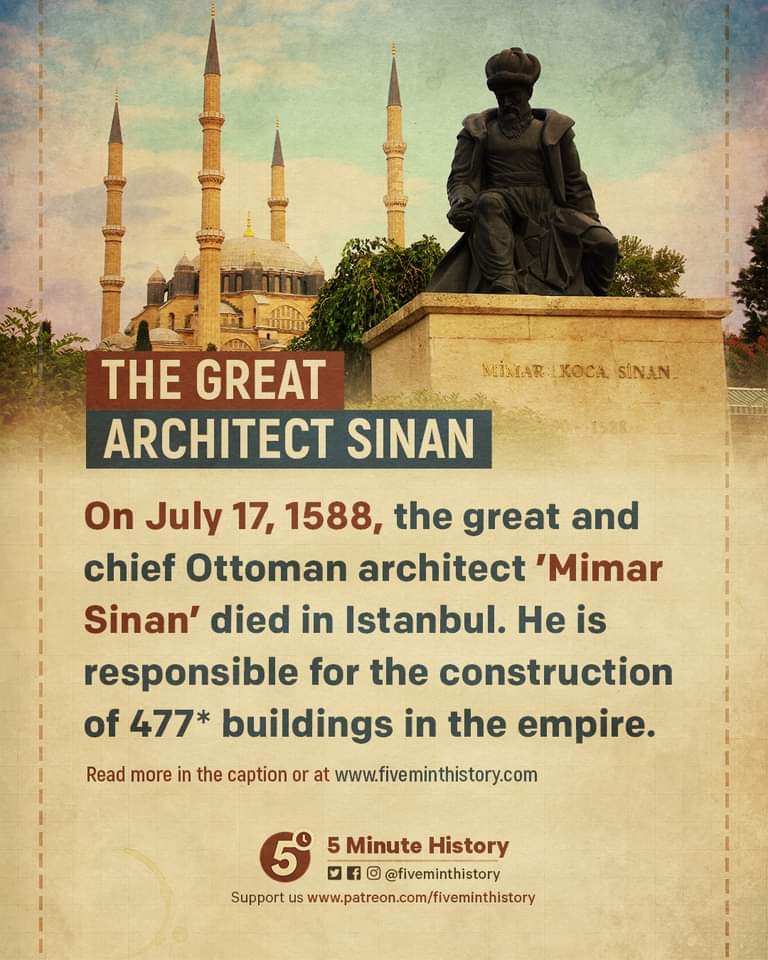During his long career as an architect and civil engineer, Sinan served three Ottoman Sultans: Suleiman the Magnificent, Selim II, and Murad III.
He first showcased his talents in the 1530s by designing and building military bridges and fortifications. Later in 1539, Sinan completed his first nonmilitary building, and for the rest of his life, he worked as the chief architect of the Ottoman Empire.
There are different sources giving the count of the numbers of the constructions that Sinan was responsible for. It ranges from 343 to 477. But in any case, in geographical terms, his works stretched over most of the regions of the Ottoman Empire.
Some of them include; the Mosque of Khorsaw Pasha in Aleppo, the Tekkiye Mosque in Damascus, the dome of the sanctuary of Al-Haram Al-Shareef in al-Quds and the school of Sultan Suleyman in Makkah, Mosque of Mehmed Pasha in Sofia and in Herzegovina, Mosque of Mustapha Pasha in Ofen (Budapest), and the Palace of Mehmed Pasha in Sarajevo.
Some of the numbers of the projects of Sinan include— 79 mosques, 34 palaces, 33 public baths, 19 tombs, 55 schools, 16 poorhouses, 7 madrasahs (religious schools), and 12 caravansaries, in addition to granaries, fountains, aqueducts, and hospitals.
His three most famous works are the Şehzade Mosque and the Mosque of Sultan Suleiman the Magnificent, both of which are in Istanbul, and the Selim Mosque at Edirne (can be seen in this graphics). Prior to being appointed as the chief architect, he had served as an officer of the Janissary Corps.
Considered as one of the greatest Muslim architects, Sinan’s concepts were incorporated into the designs of the other major landmarks throughout the world, including the magnificent Taj Mahal.
Thanks – 5 Min History


